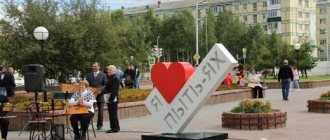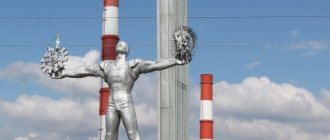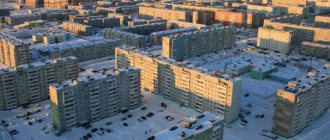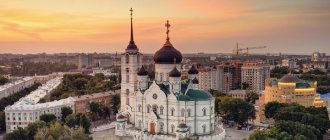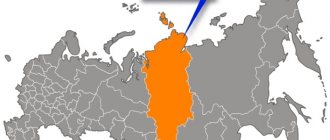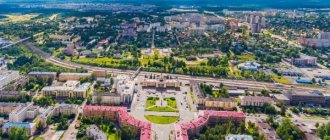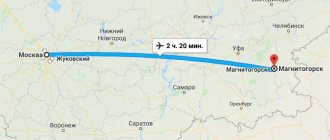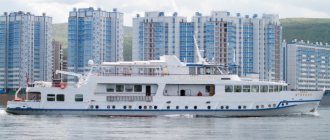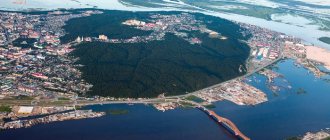Where is Voronezh on the map of Russia
Voronezh on the map of Russia is located in the southern central part between the Central Russian and Oka-Don plains, on both banks of the river of the same name, which flows into the Don. The distance from Moscow is about 500 km.
Nearest major settlements:
- Rostov-on-Don;
- Kursk;
- Lipetsk;
- Eagle;
- Tambov;
- Volgograd;
- Tula.
It forms the largest agglomeration in the central federal district of Russia, after Moscow.
Administrative matters
In addition, the creation of Voronezh was supposed to provide the region with an administrative center - it would be easier to locate government institutions in the city under the protection of a garrison. Due to the specifics of the situation in the border region, the primary role was assigned to military commanders.
The highest authority in Voronezh was the voivode. He was appointed from Moscow, usually from among the noble boyars with a court rank. Semyon Saburov was the first Voronezh governor. The voivode combined all the functions of senior management at once - military, administrative, judicial, financial. Due to the specifics of the situation, the military powers of the governor were in first place in Voronezh.
In his activities, the governor had to be guided by the royal order, but usually he was given quite wide opportunities for independent decision-making - in unusual situations, the governor had to act “according to his understanding.” Therefore, the results of leadership strongly depended on the personal qualities of the governor. Among them there were often completely irresponsible people, more preoccupied with issues of their own enrichment at the expense of the local population, which led to disturbances and uprisings.
To support his activities, the governor had an office - a moving hut. As the most important government institution, it was located on the territory of the inner city. The role of officials was played by competent clerks.
The siege leader was something like a deputy governor for military affairs. He was usually appointed from among the local feudal lords. The siege leader led the troops during Tatar attacks, ensured the city's readiness for a possible siege, and also led the city artillery and government artisans. One of the most famous siege heads of Voronezh was Prokofy Shishkin. The various branches of the army were led by Streltsy and Cossack heads - from among the “servers in the fatherland.” These officials also had many opportunities for abuse, which negatively affected the defense capability and the general situation in the region.
Voronezh fortress, drawing
The civil local authority was represented by the zemstvo elder. He was elected by the townspeople from among the richest and most influential people. The zemstvo elder monitored the collection of taxes, the administration of duties and was in charge of other ongoing administrative affairs.
The law enforcement and judicial systems were represented by the provincial headman (an elected position, and candidates were selected from among the feudal lords) and three kissers from among the local free population (including state peasants). They performed duties similar to those of a judge and jury. A competent clerk was provided as a clerk to the “labial hut” (as this structure was called). The structure also operated a local prison.
The efficiency of government agencies in Voronezh was not very high, not only because of the “bribery” of some of their representatives. Many problems arose due to the almost universal illiteracy of the local population, who could not clearly express their request to the state “man”. Various kinds of “petitions” and “authorized notes” were compiled by the same clerks or priests, according to the applicants. They usually signed it too.
The presence of a church administration in Voronezh was also of considerable importance at that time. The Voronezh diocese, headed by Bishop Mitrofan, was created in 1682.
Climate and weather in the city by month. Best time to travel to Voronezh
Voronezh on the map of Russia is located in the central part, which means it is in the temperate continental climate zone.
Winters are mild, but with constant snow cover. Thaws or a sharp drop in temperature to -20 are possible. Frosts are short-lived. The average daily winter temperature is -6 degrees. Ice cover is established on the Voronezh Reservoir from December to March.
Summers are warm, with hot, dry periods possible in July and early August. In some years, summer can be rainy. The duration of the climatic summer is 114 days. Autumn is damp and mild. Snow cover is established by mid-December, rarely in November.
In spring the weather is unstable. The air can warm up to +20 degrees, and then it snows suddenly. On average, frosts end in April. In recent years, there has been a decrease in sharp temperature changes both in winter towards warming and in summer. The number of cloudy days without sun is about 100 days, most of them occur in winter.
The best time for excursions around the city will be the end of spring, the beginning of summer and autumn. At this time, it is most comfortable to walk the streets and see the sights.
The result of regular design
Although the square on the site of the modern city administrative center is quite many years old, it appeared using an unusual method for historical development - a planned one. In 1774, a plan for the reconstruction of Voronezh was created. It was designed to kill several birds with one stone - to expand the urban area, improve transport links (by laying convenient wide streets) and eliminate the consequences of a major fire that had happened before.
Among other things, the city needed space for legal trade. But he no longer needed the ancient defensive ramparts - times had changed. Therefore, a new square was built outside the territory of the ramparts, and to begin with, a state-owned “salt store” building was built on it - fortunately, there was a state monopoly on salt. A map of Voronezh in the 1780s could already demonstrate the regular trapezoidal outline of the central square. Then it was occupied for horse trading, and it was natural to call it Horse. It existed under this name until 1871.
Transport system of Voronezh. How to get to the city
Getting to Voronezh will not be difficult.
Any options are possible here:
- Chertovitskoye International Airport is located 13 km from the central part of the city, where planes fly from all major cities of the country and beyond.
- Railway communication is maintained with a huge number of cities, both in the Central part and in the Urals, and Siberia. There are three train stations in Voronezh. One in the city center, carries the main flow of railway transport routes, from it you can get to any area of the city. Electric trains also operate in many directions.
- There is a bus service to the nearest settlements. There are regular bus services from Moldova, Ukraine, Belarus, Armenia and even Kazakhstan from the city bus station and 2 bus stations.
- Private minibuses operate regularly from nearby cities.
- You can get there by private car.
The birth of the Russian fleet
The city received a completely new round of development with the decision of Peter I to organize the construction of the first Russian naval fleet in Voronezh.
The city was not chosen for this purpose by chance. The strategically convenient location next to the Don, relative proximity to the Sea of Azov and dense forests around became the determining factors in the king’s decision.
Peter I was a man of action, so already in 1769 the first ship, the galley Principium, left the Voronezh shipyard, which subsequently took part in the victorious capture of the Azov fortress.
But this was only the first sign. A total of 215 warships were built in Voronezh. The powerful fleet became the real pride of the Russian Empire.
Geographical features of the city
Voronezh on the map of Russia is located in the center of the European part, at the junction of the Oxo-Don Plain with the Central Russian and Kalach Uplands. This area is dominated by contrasting topography and forest-steppe nature. The Don River and the Voronezh Reservoir, the largest in the central Black Earth Region, have their influence.
The city's location along the banks of the Voronezh River leads to hilly terrain and changes in terrain, which is reflected in the names of city streets:
- Metalhead Mountain;
- Red Mountain;
- Bazarnaya;
- Kubanskaya;
- Craft;
- Sandy;
- Meat Mountain.
Truly revolutionary change
On October 27, 1917, the Empire Hall hosted a citywide meeting, the agenda of which included the issue of attitude to the events in Petrograd. A somewhat vague resolution on a “free society without violence” was adopted, but this did not give any practical result - Voronezh still found itself drawn into the whirlpool of the civil war.
Starokonnaya Square in Voronezh during the NEP
But revolutionary changes on Lenin Square began not in 1917, but later - in 1923-24, when peaceful life was already getting better. The new government did not intend to create unrest in an important part of the city, and quickly liquidated the new, spontaneous, crowded market. In 1923-24 some buildings were demolished (for example, a police station) and due to this the square was expanded - the workers needed cultural recreation. And then the history of the square went in a completely unusual direction - they began to turn it into the center of city administrative and public life.
It turned out that in Voronezh there is no space convenient for holding parades and demonstrations of workers. The realities of increasing automobile traffic also demanded a response. And they decided to turn the former Staro-Konnaya into an administrative center and public place.
To begin with, old buildings began to be demolished or rebuilt here. So the old “salt shops”, the chapel and even the water tower became a thing of the past. But in 1930, the corner house of the Sakharovs was completed, and in 1934, the former building of a commercial bank. In 1931, a new residential building appeared on the square in the constructivist style that was fashionable at that time. In 1936, a pompous, but in its own way majestic, building of the regional party committee arose, decorated with a bas-relief depicting the entry of the Budenov cavalry into Voronezh.
Photo 1937 Celebration of the 20th anniversary of the Great October Revolution
Sports parade on the square of the XX anniversary of October, photo 1938
At the same time, the main square itself was put in order. A storm drain was installed on it, asphalt was laid, beautiful cast-iron lighting poles were installed, and in 1940 a huge monument to Lenin by the sculptor N.V. was erected. Tomsky. But the square did not receive the name of the proletarian leader then - since 1937 it was called “The Square of the 20th Anniversary of the October Revolution” (in honor of the anniversary of the October Revolution). Now it was possible to drive along it freely by car, and it became convenient to hold public events - near the monument.
Square of the 20th Anniversary of the October Revolution in the pre-war years
Only historical changes prevented the townspeople from gathering in the new square for some pleasant occasion. On November 7, 1941, a military parade took place there, the majority of the participants were units going to the front.
Parade on the square on November 7, 1941
And soon the occupiers who occupied Voronezh turned the square into a place of executions, and the monument to Lenin into a gallows. Then they completely took the monument away for melting down (bronze is a valuable thing), and Koltsovsky Square was turned into a cemetery for their soldiers.
Lenin Square in 1942, archival photo
However, the occupiers did not triumph for long. On January 25, the Red Army soldiers who liberated the city strengthened the red banner on the high tower overlooking the square of the Voronezh Hotel (regional trade union council) and took a photo for history.
Borders of Voronezh, relationship with other cities
Voronezh is the main city of the administrative districts and 3 urban districts, along with Borisoglebsky and Novoronezh, which is clearly visible on the map of the region. There is also a division into municipal districts, urban and rural settlements, as is customary in Russia. There are 32 large settlements in the region, including Bobrov, Buturlinovka, Kalach, Liski, Semiluki, Ertil.
The main neighbors are the following areas:
- Rostovskaya;
- Belgorodskaya;
- Kursk;
- Lipetskaya;
- Tambovskaya;
- Volgogradskaya;
- Saratovskaya.
The region also has a common border with Ukraine. Since the Soviet period, the friendship of Voronezh with the twin cities of Borno and Gorzow Wielkopolski has been going on, industrial delegations are being exchanged, and relations in the cultural and educational spheres are also continuing. Attempts are being made to agree on the development of business contacts and holding joint exhibitions and fairs.
Periodic exchanges of delegations from Voronezh with the German Land District of Wesermarsch continue, but there is no economic cooperation between the cities. Cultural exchange takes place with the Spanish Leon and the Bulgarian Sliven.
Agreements were concluded with Gomel and Lugansk. Relations with the Chinese city of Chongqing are being actively improved, but so far to no avail.
Household affairs
The growth of Voronezh and its development in the 17th century led to an increase in the number and importance of the non-military urban population. From a fortress that existed only for defense purposes, the settlement turned into a real city - an economic and administrative center.
On the territory of the city proper, Yamskaya (Ordzhonikidze Street), Naprasnaya and Yamnaya settlements arose, inhabited by artisans and coachmen. State-owned artisans who served the military (blacksmiths, carpenters) also lived in the city.
Feudal landowners gradually developed empty lands, populating them with dependent peasants. The so-called trades – hunting, beekeeping, and fishing – also flourished in the vicinity of Voronezh. They developed here even before the appearance of the city (contributing greatly to the settlement of the region) and survived after 1586. The production of saltpeter flourished in the surrounding area (it is needed to make gunpowder, so there was a demand). The monasteries of Uspensky, Karachunsky and Borshchevsky, which administratively belonged to Voronezh, also had their own farms. According to 1615, in the Voronezh district (that is, in the territory administratively and economically dependent on the city) there were 63 villages of different sizes and types.
Agriculture developed mainly extensively, because there was a lot of free land. The cultivation of the land itself was carried out using primitive methods, and the yields were low. Famine in the event of drought or other unfavorable natural conditions was common. Barley and oats were mainly grown near Voronezh; wheat was rarely found.
Map of 1694 of the Voronezh River floodplain and the city fortress
When founding the Voronezh fortress, the convenient location of the area was taken into account - the area between the Don and Voronezh rivers was a natural crossroads of trade routes. However, Voronezh trade did not develop too quickly, since the city did not have privileges in this area (although border cities usually had them). However, the city had a bazaar where agricultural products and handicrafts were sold. Military settlers often acted as traders - they were not prohibited from doing so, and trade made it possible to significantly increase the well-being of the family.
In the 17th century, the domestic Russian market developed rapidly, and this also affected Voronezh trade. If the inventory of 1615 recorded the presence of 60 trading shops in the city, then in 1658 there were already 137 of them. At the same time, the position of service people in trade was shaken - they were replaced by professional merchants from among the townspeople. Local merchant families—the Khripunovs, Gardenins, and Pribytkovs—emerged and began to grow rich.
The city had the closest trade ties with Ryazan and other southern Russian cities and Moscow. Trade along the Don was of great importance - the rivers at that time were the most convenient roads. Merchants from the Volga arrived here by portage (that is, by dragging ships overland). Fish, bread, crackers, salt, gunpowder, and sometimes rare oriental goods from the Caspian Sea were transported along the river.
Voronezh was quite a large settlement according to the ideas of that time. Taking into account the approximate breakdown of the “household” population at that time, we can approximately estimate the number of Voronezh residents at 6 thousand people. Further, the population of Voronezh only grew.
Population of Voronezh
Voronezh has recently been marked on the map of Russia as a city with a population of one million. It ranks 14th in terms of population among all Russian cities.
Percentage of Voronezh population
In 2013, the urban population exceeded the 1 million mark.
| National composition of the city's population | Number of thousands of people | % of total population |
| Russians | 850.5 | 96.9 |
| Ukrainians | 8.9 | 1 |
| Armenians | 4.2 | 0.5 |
| Azerbaijanis | 1.9 | 0.2 |
| Belarusians | 1.6 | 0.2 |
| Tatars | 1.0 | 0.1 |
| Other nationalities | less than 0.1 |
Everything for the front, everything for victory
The city of military glory, Voronezh, played a vital role in the defense against the Nazis.
For 212 days, the right bank part was occupied by German troops. More than 90% of buildings were destroyed and thousands of civilians were killed. But the city did not give up and was liberated by the heroic efforts of the Soviet army.
From the very beginning of the war, Voronezh enterprises began producing weapons and special-purpose equipment. It was here that the BM-13 launchers, known throughout the world under the name “Katyusha”, were created.
City infrastructure
Administratively, the city is divided into 6 large districts. On the left bank of the river there are 2 of them, with old buildings, populated mainly by factory workers. There is an area with sorcerers and witches called Koldunovka. There is Drunken Street, where you can always get moonshine.
The cleanest and most expensive district of the city, Sovetsky, is located in the western part, surrounded by forests. The youngest and most dynamic district, Kominternovsky, is home to a third of the city’s population. The northern area is considered a residential area and is characterized by the greatest comfort and safety.
The historical part of the city is concentrated in the Central District with a large number of cultural sites, public gardens, parks, theaters, museums, various attractions and entertainment venues. The city also has many theaters, museums, shopping centers, cinemas, nightclubs, cafes and restaurants.
But the main distinguishing feature of the city is the student population, which amounts to more than 120 thousand high and middle school students, and the same number of schoolchildren. Voronezh ranks 3rd in the country in terms of the number of foreign students studying. There are 36 universities and universities, and more than fifty secondary educational institutions.
Ecology
Voronezh, with its large industrial production, has a negative impact on the ecological state of the environment. The left bank part of the city is especially polluted. Due to the toxic air and smog, it was informally nicknamed the gas sector.
But vehicle emissions account for the majority of atmospheric pollutant concentrations. Another significant environmental problem of the city is related to the collection and disposal of garbage and household waste.
River water, reservoirs and springs in nearby urban areas are also heavily polluted and do not meet hygienic requirements. There are several nature reserves and reserves in the region, part of the Usmansky Bor with the status of an international biosphere reserve.
Resources
Mining is carried out in quarries in the Voronezh region; official status has been assigned to many deposits.
The following are actively being developed and mined:
- granite;
- sand;
- limestone;
- mineral pigments;
- special refractory clays.
Poetic component
But the trading area was somewhat smaller than the modern one and had a different shape. So, individual sections of the current Lenin Square - the main square of Voronezh - have different histories.
On the site of today's Koltsovsky Square, until the mid-19th century, there was a military parade ground and a police station, for which the house of a certain Popov was purchased in 1820. The square was built on the site of the parade ground in the 1860s. Even then it was assumed that a bust of Alexei Koltsov would be installed in it. This was done in 1868. Since then, Koltsovsky Square (albeit small) has become a popular recreation spot. It had flower beds with exotic flowers, and in 1876-1877. one of the first city fountains appeared (the water tower is nearby - convenient!).
By the end of the century, other cultural objects appeared on the square - the Electrotheater Thaumatograph and Empire cinemas, and earlier - the city council building. The central square of Voronezh began to look more intelligent. Koltsovsky Square was also completed, the fountain was decorated with a “pinwheel”, and the place became very popular among the townspeople.
Sights of Voronezh
The first mentions of the city are found in documents from the late 16th century. Many ancient Orthodox churches, merchant mansions and unusual buildings of the late XIX-XX in the Art Nouveau and Gothic styles have been preserved here.
The city has modern, funny and original monuments:
- front-line postman;
- paratroopers;
- seller and buyer;
- healing chair;
- a kitten from Lizyukov Street;
- White Bim Black Ear.
The following famous personalities are also immortalized in the sculpture:
- Samuil Yakovlevich Marshak;
- Vladimir Vysotsky;
- Saint Mitrofan.
Religious buildings
The newest religious building in Voronezh was the Annunciation Cathedral of the Russian-Byzantine style. It is the city’s cathedral church, built over about 10 years according to Shevelev’s design, and solemnly consecrated in 2009. The oldest church in the city is considered to be the Admiralty Church , built in the classicism style at the end of the 16th century.
The oldest in the Black Earth Region is the Alekseevo-Akatov convent, founded in 1620 as a monastery. It is worth taking a walk around the temple to appreciate the beauty of the landscape design of the monastery territory. St. Nicholas Church in the Russian Baroque style was built in the 18th century in the city center and houses a piece of the holy relics of St. Nicholas the Ugodnik.
The oldest church of the Spaso-Preobrazhensky convent in the Tolshi microdistrict, founded in the mid-17th century, is considered a place of prayer.
Museums
The most picturesque city mansion in the eclectic style of the early 20th century with elegant bright red facades houses the best exhibitions of the Voronezh Museum of Local Lore. Rare exhibits of porcelain and ceramics, ancient books and unique documents, collections of weapons and numismatics, historical and ethnographic objects are periodically exhibited.
The Arsenal Museum is located in the former Gardenina factory building, built in the mid-18th century, a federal cultural heritage site. The museum has a permanent exhibition dedicated to the history of the region during the Great Patriotic War. Thematic exhibitions from the museum’s rich repository are exhibited for various memorable dates.
The Museum of Forgotten Music presents to visitors a huge collection of ancient musical instruments, found or specially recreated according to descriptions.
The baroque palace of the former Voronezh governor of the 18th century houses an impressive art museum collection, consisting of exhibits of ancient art, sculptures, icons, Russian and European paintings.
Natural attractions
The Khopersky Reserve occupies an area of more than 16 thousand hectares, stretches along the bed of the Khoper River, where it was possible to preserve a special endangered species of sterlet. The reserve is famous for its huge species diversity of local flora and fauna, including acclimatized species. Tourists are allowed to visit with special passes.
Divnogorye is a unique combination of archaeological, architectural and natural reserve. Located in the area of the chalk mountains. Known among pilgrims for its cave churches.
For eco-tourists, the abundance of endemic flora is especially attractive. Archaeological and historical researchers are attracted by the Mayatskoye settlement, which is the oldest Khazar fortress with a vast burial area.
Kalacheevchkaya Cave is a former monastery created in chalk deposits in the form of man-made caves and extended passages. The religious purpose has long been lost. The caves are famous for their inscriptions on the walls and vaults. Many of them are already more than a dozen years old.
Interesting places to relax with children
The pools of the Voronezh Oceanarium are home to more than 2 hundred species of fish, various mammals, birds and reptiles. Here you can get acquainted with such rare representatives of the seabed as the electric eel, spider crab, and Japanese moray eel. There is an opportunity to see a dangerous tiger shark up close. A visit to the aquarium will delight both adults and children.
The best park and decoration of the city is considered to be the place near the reservoir called “Scarlet Sails”. Its landscape design was carried out by a French specialist. The park on the shore includes recreation areas, a beach, a summer theater, dance floors, cafes and restaurants, playgrounds and picnic areas.
The Shut Puppet Theater dates back to the 30s of the 20th century and enjoys enduring popularity among young viewers. The repertoire includes classic works that will be interesting to watch not only for children, but also for adults. There is a puppet museum attached to the theater, where you can get acquainted with the devices and costumes of various theatrical representatives.
The local zoo occupies a not very large area of 0.5 hectares, but a walk around it will be interesting for every child. Children's favorite monkeys and macaques, tigers and crocodiles, boa constrictors and bears live here. More than 150 different species of animals and birds, some of which are already considered endangered.
Places for recreation and entertainment
Admiralty Square is one of the most beautiful places in the city. The main part of city holidays and mass celebrations, concerts, fairs and fireworks take place here. This ancient place remembers Emperor Peter, who built the first warships on the embankment for the campaign against Turkey. In memory of this, a rostral column and a triumphal arch were installed at the entrance to the square.
One of the favorite places for city residents to walk was Petrovsky Square with a bronze statue of the emperor. A very pleasant park with chestnuts and pine trees, where on a hot day you can hide in the cool shade and admire the splashes of a working fountain.
The Orlyonok park also boasts a large fountain; with beautiful flower beds and a large children's playground, it has also become a favorite place for family recreation.
At the Parnas entertainment complex you can have a great time in bad weather, and in the evening it turns into a fashionable nightclub. There is a sauna, billiards, and bowling alley. In a cafe with excellent cuisine, the whole family can taste the most delicious dishes.
There are not many analogues to the gigantic modern entertainment complex “Balagan City”. It consists of several different sites, designed in the form of mini towns. Each has its own traditions and entertainment, its own cuisine. You can choose what you like, and even take part in preparing your favorite dish.
Hotels in the city
There are several accessible places in Voronezh where you can stay for a few days and spend time comfortably:
- Recreation center and hotel "Ivanovo Lake" is located outside the city, half an hour’s drive from Voronezh, on the shore of a pleasant body of water. Here you can not only spend the night in comfort, but also take a horse ride or go fishing on a boat. There is a swimming pool, gym, spa treatments available. Room prices range from 6 to 18 thousand. You can take a taxi to the village of Kuleshovka, st. Priozernaya, 1.
- In the city center on Dzerzhinsky Street 5B you can stay luxuriously in Art with a cozy restaurant. The average cost of rooms with paid breakfast is 5,000-10,000 rubles.
- on the territory of the largest shopping on 20 Let Komsomol Street. All the main attractions, parks and public gardens of the city are located nearby. The shopping center has many different cafes and restaurants where you can order food directly to your room. Daily stay varies from 4,500 to 10,300 rubles.
- On Koltsova street 1 there is an author's Hotel "Bronze Boar". The cost of rooms is quite budgetary for the city center from 2900 to 5500 rubles. All rooms are individually designed with stylish furniture. There is a wood-burning bathhouse and a sauna.
Versailles - Close to the center at 26 Detsky Lane there is a new cozy hotel “Versailles” , where you can spend the night for 2000-5000 rubles. per day.
Sanitation problem
The leadership of Voronezh in the second half of the 19th century took care of the sanitary condition of their city. In 1869, it even had a water supply system, and a water tower, built with funds from local merchants, adorned Horse Square. However, the horse trade itself did not contribute at all to sanitation.
It was unthinkable to give up horses, but the city leadership, back in 1854, made an attempt to expel the “harmful industry” to the city outskirts - to the new Sennaya Square. However, the traders followed the principle. They agreed to donate 150 rubles per person per year to the city if they were left in their original place! Otherwise, they say, they will suffer losses!
The city leadership agreed to these conditions for quite a long time, but the horse manure did not decrease. In 1871, the horses were partially expelled. It was never possible to move the trade to Sennaya Square, but it was possible to arrange it so that on Konnaya they were traded only on ordinary days, and during fairs - on the square formerly called Drovyanaya. Accordingly, the former place became the Old Horse Square. The horse market was completely removed from the main square of the city only in 1884, finally renamed Staro-Konnaya (Drovyanaya became Novo-Konnaya).
But the local population did not enjoy the silence, space and cleanliness for long. In 1892, the so-called “flea market” was moved here, that is, a market for everything and anything for the most undemanding buyers. Former salt barns were also rented out by the state for trade (the monopoly on salt was abolished long ago). There soon became so many sellers and buyers that they created problems for the movement of the city horse-drawn horse (about which a special commission of the City Duma passed a special resolution in 1907). The traders from the flea market were loudly indignant, but they were nevertheless evicted to the Samofalovsky parade ground.
Where to eat: cafes and restaurants
| Name | Address | Sample check |
| Via Bar Luskoni | st. 20 years of Komsomol, 54a | 700-800 |
| Old city | st. Pushkinskaya, 2 | 1200-1500 |
| Route 66 | st. Lizyukova, 50 | from 600 |
| Harmonic | st. Karla Marksa, 94 | from 800 |
| PLATON | Pobeda Boulevard, 50 | from 1000 |
| Italian courtyard | st. Kropotkina, 10a | 500-1000 |
| Uchkara | Revolution Avenue, 46 | from 750 |
Useful information for tourists
In May, many fans of Japanese animation from all over the country arrive in the city for the All-Russian Festival. In June the Platonov Festival is held with the participation of international guests. On the 3rd Saturday of September, cheerful folk festivals with fairs and solemn celebrations dedicated to City Day are held, with a concert and fireworks.
Pilgrimage trips occur on the main religious holidays: Easter and Christmas with Epiphany. The health season in boarding houses and sanatoriums lasts all year round. The swimming season officially opens on the first day of summer, but in fact no one swims in the city reservoir. In the summer, river cruises on boats and motor ships are also held.
In winter, you can enjoy skiing, snowboarding and snowmobiling. From December to early March you can plan a visit to the ski resort. Voronezh is a very distinctive and unusual city, it occupies not the last place on the map of Russia, it is loved by a wide variety of tourists and is beautiful to visit in its own way at any time of the year.
Article design: Vladimir the Great
There will be hail here
Despite the fact that the city is mentioned several times in ancient Russian chronicles, the official date of the founding of Voronezh is 1586.
The city existed on this site before, but it was in 1586 that the construction of the fortress, which was of great strategic importance, was completed. The construction of the fortification was initiated by Tsar Fyodor Ioannovich himself and was intended to protect Russian lands from attacks by the Crimean Tatars from the south.
The fortress and the city itself were almost completely destroyed during the Cherkasy raid in 1590, and four years later they were rebuilt. Thanks to its favorable location near the banks of the Don, the city acquired the status of an important trading hub and began to grow rapidly.
Since the Time of Troubles, difficult times have come to the city. The failure of the grain harvest led to widespread starvation and death. The streets of Voronezh are almost completely empty. The tithe duty imposed by Boris Godunov on the already impoverished residents also played a role. The city came out in defense of False Dmitry I, and after his death also provided all possible support to another impostor - False Dmitry II.
But hard times don't last forever. Gradually, discontent in the city subsided. Voronezh regained its strength and continued to exist as the most important outpost protecting the southern borders of the state.

